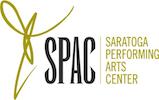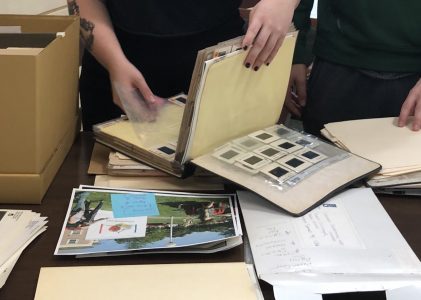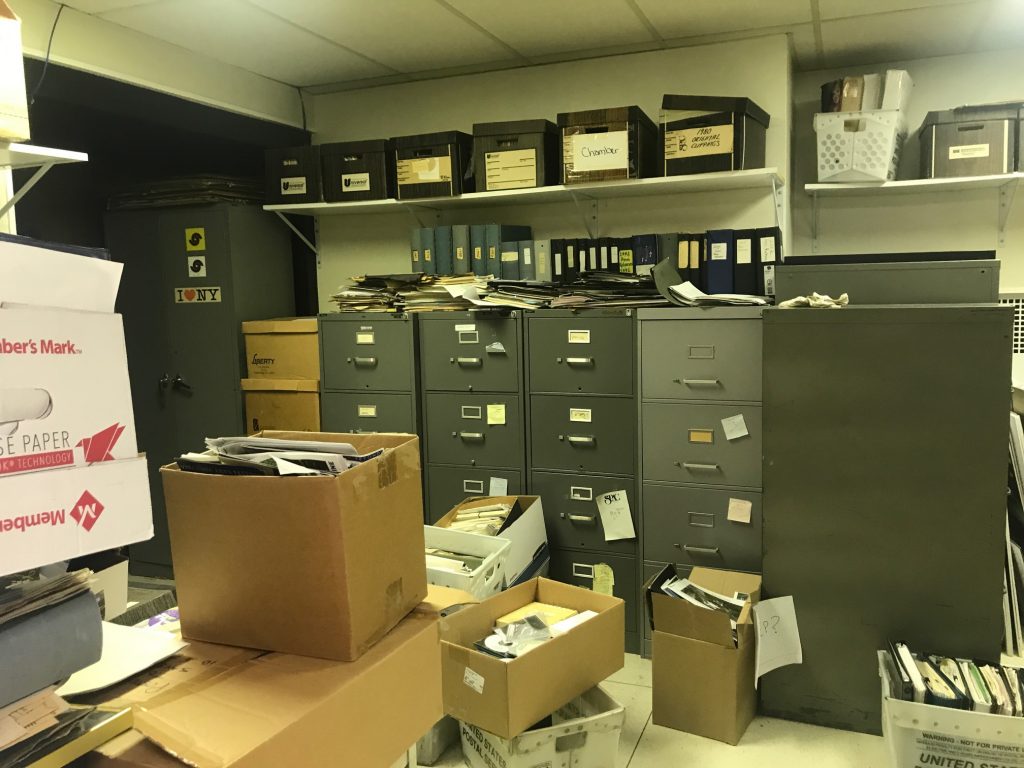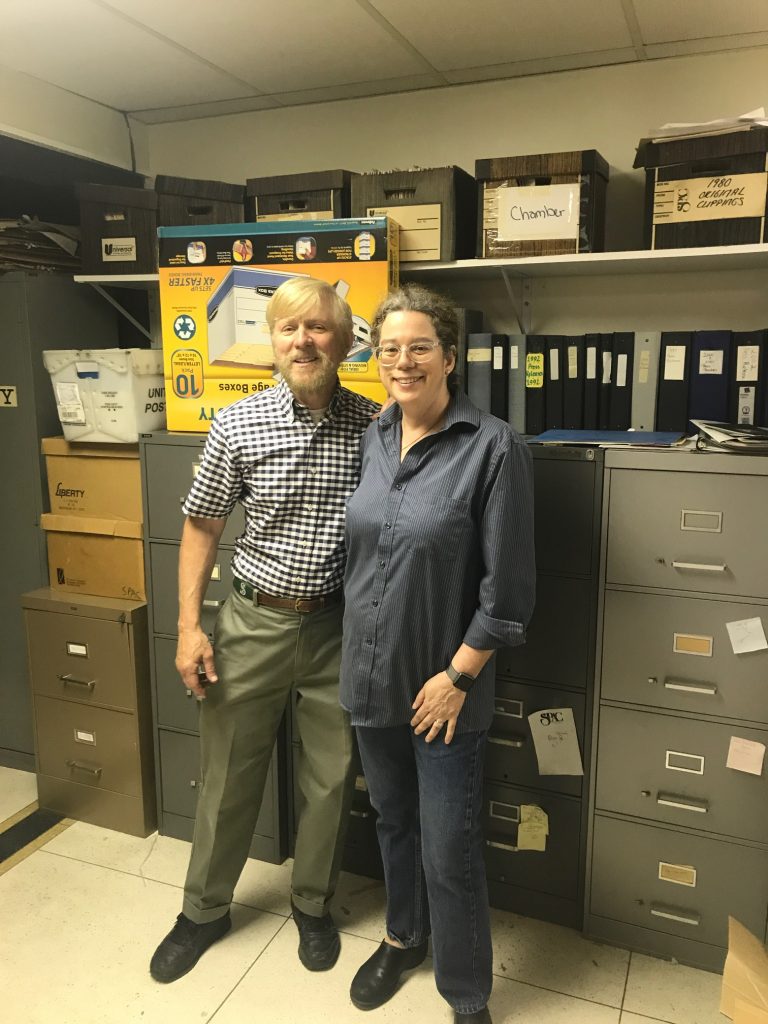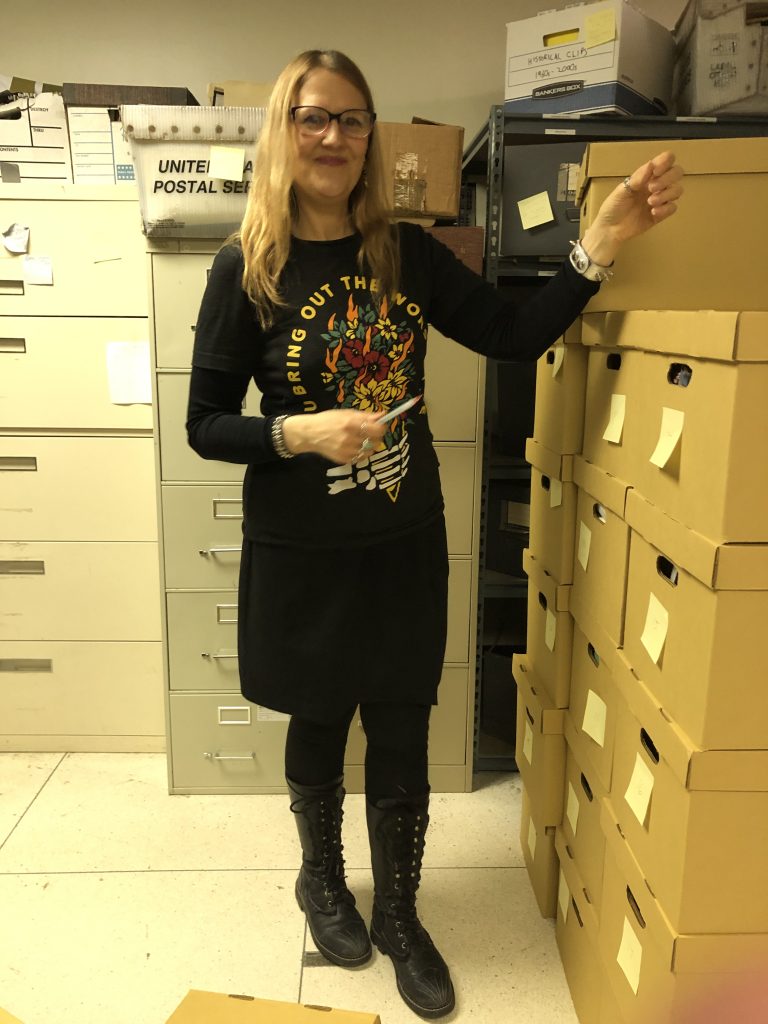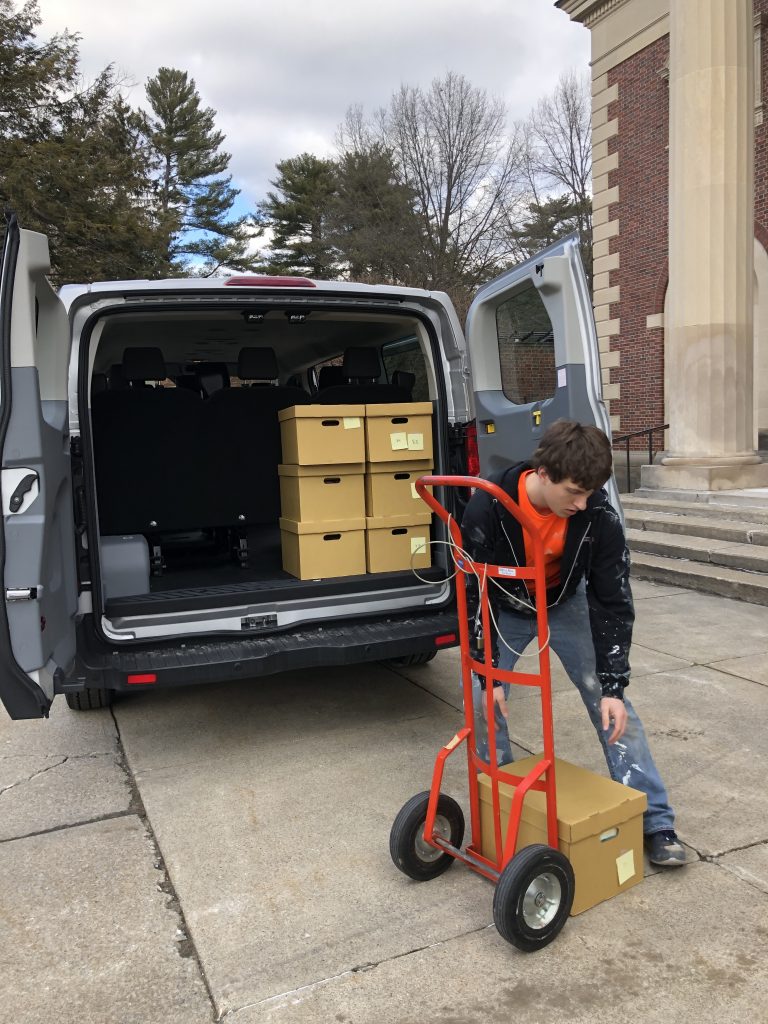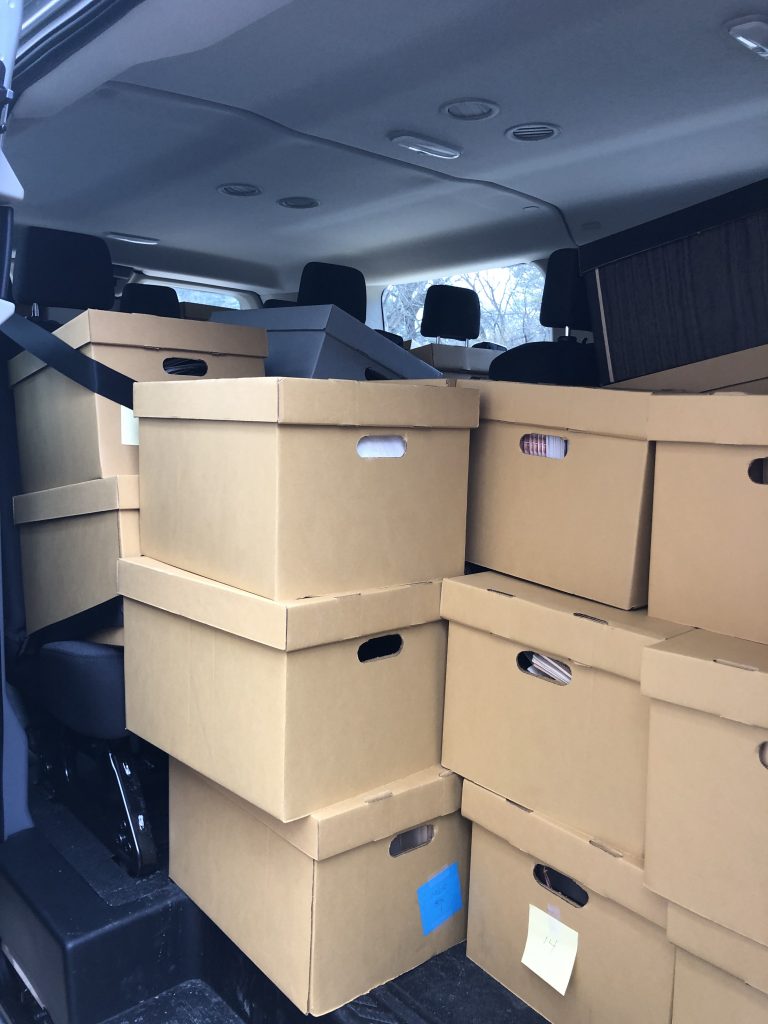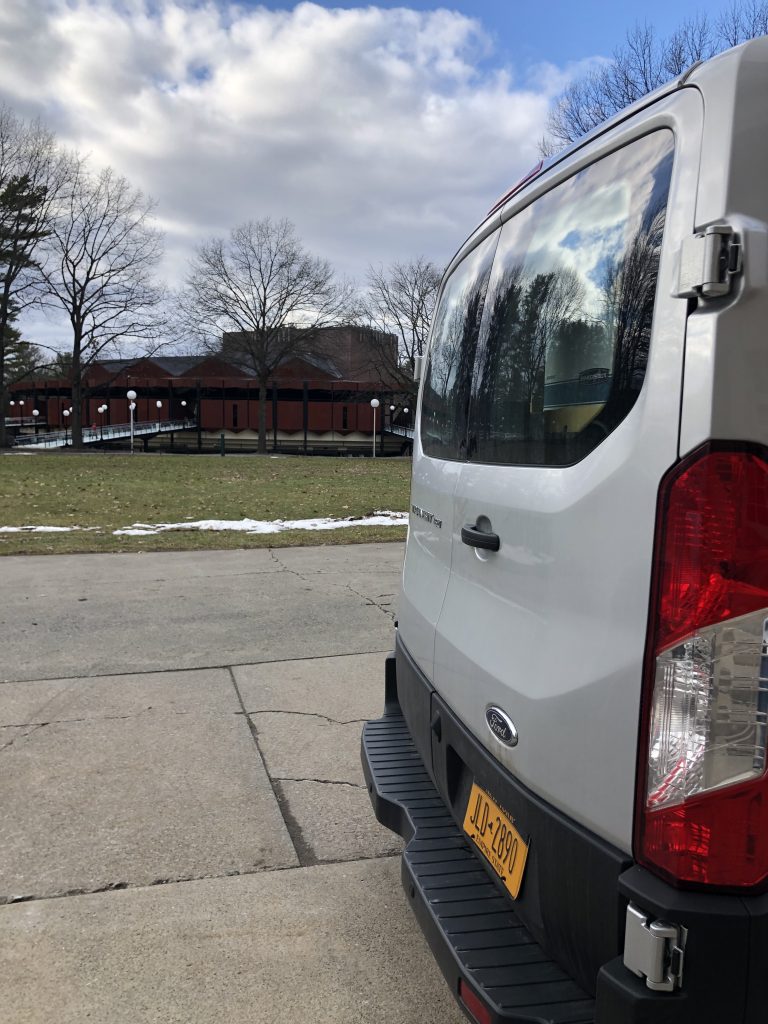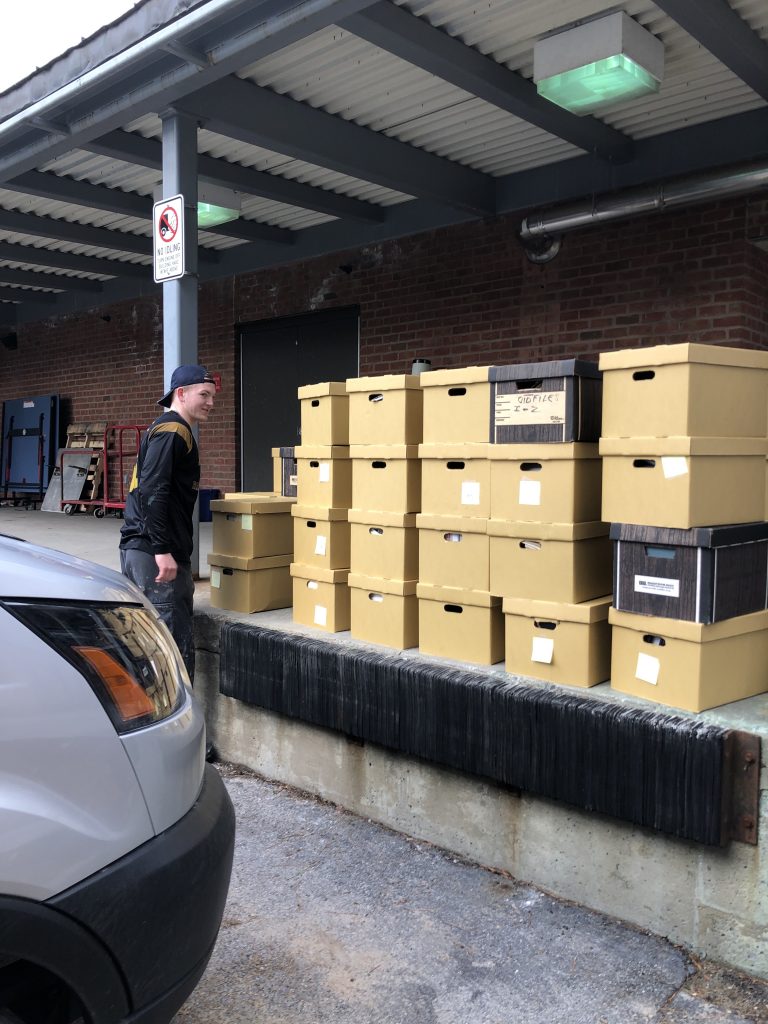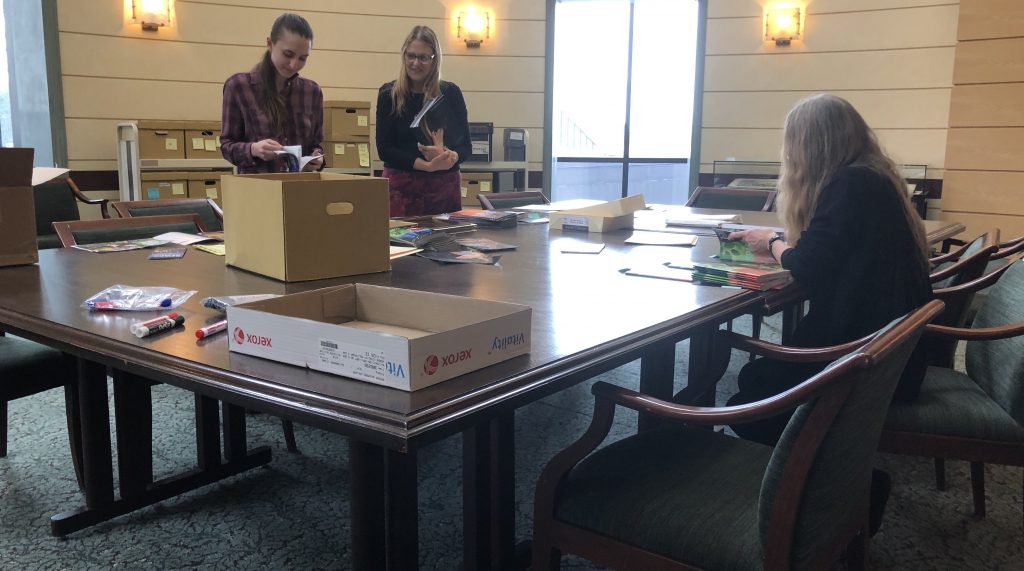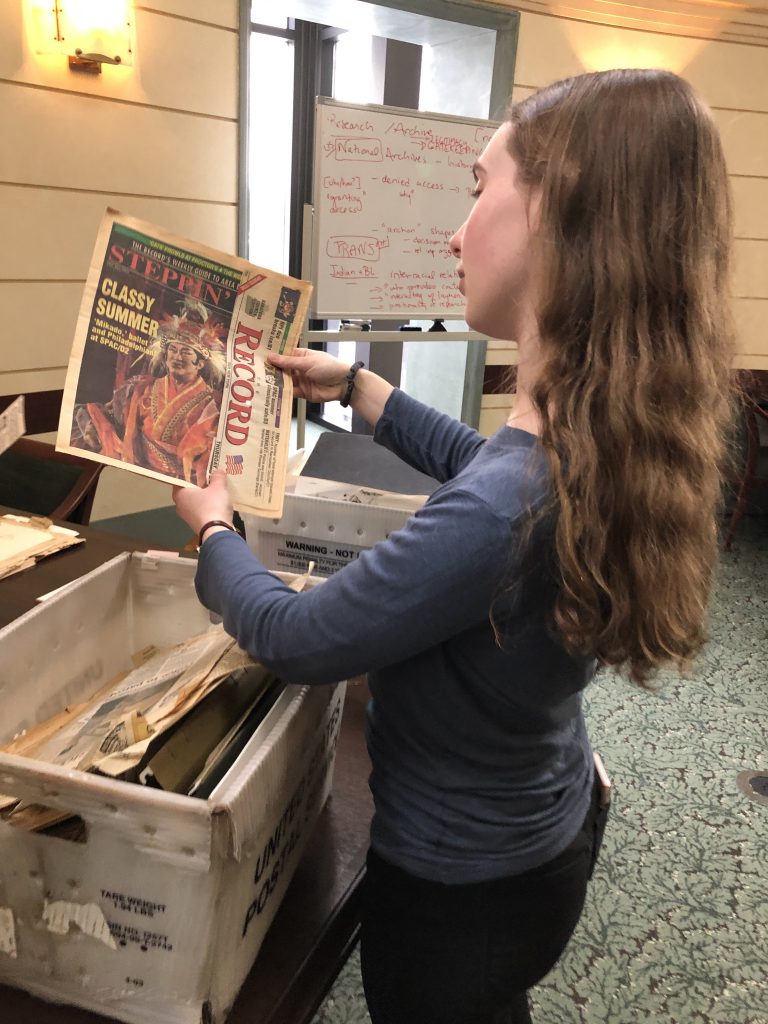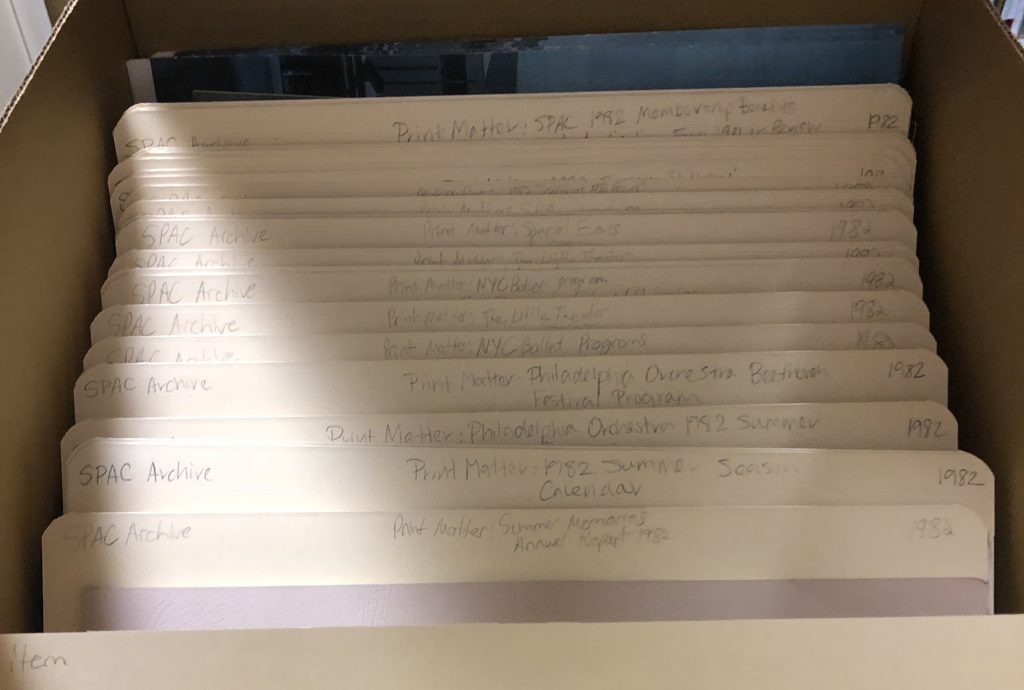Since the moment plans took shape in 1962 to fund and open a performing arts center in Saratoga Springs, N.Y., letters and memos, flyers, newspaper articles, photographs, and a host of other records have been created and stored that provide rich materials with which to tell the stories of the people, venues, activities and behind the scenes work of the Saratoga Performing Arts Center (SPAC). As with many cultural organizations, no policy was put in place at the beginning about what to keep and how to sort and file materials so they would be accessible, both to SPAC and those passionate about its history.
Historian Field Horne, an expert in identifying archival projects in need of work, approached Elizabeth Sobol, Executive Director of SPAC, and Jordana Dym, professor of History at Skidmore College, with an idea: perhaps students in Archival Storytelling could spend a semester organizing and inventorying 55 years of programs and other printed material and an important selection of correspondence and ‘miscellaneous’ files.
In May 2019, Dym and Horne spent a day identifying archival materials tucked in many nooks, crannies, closets and even a basement in the SPAC offices. They found documents in file cabinets, record boxes, scrapbooks, and binders — some in impeccably labeled and alphabetically organized file folders, others thrown at any angle in open boxes. Sticky notes in hand, Dym and Horne did a quick sort, and within a day, the key sections began to come together, and a plan to focus on SPAC’s documents — not the many file cabinets of well-labeled performer publicity materials– was hatched.
Over the next several months, Horne ordered supplies and boxed up the print matter, sorting each year’s documents into over 40 boxes, covering 1963-2017. In December, Dym worked with Scribner Library Special Collections librarian Wendy Anthony to box up the other materials and organize their transport to the Library where the class would meet and the student work would happen. By mid January, with a welcome assist from the SPAC facility staff, 50 years worth of printed materials were delivered in 40 boxes. In mid-February, an equally numerous and more varied set of records arrived, driven from SPAC to Skidmore by SPAC, and trundled upstairs by the students.
To prepare, students read about and sicussed the history, methods, and ethics of archival work, met with experts including oral storyteller Jocelyn Arem (an alum) and historian Kirsten Weld, consulted with Anthony and her colleagues Jane Kjaer and Rachel Rieck, and met with Kara Jefts, Registrar at the Tang Museum. They sorted the documents into series, and then began the hard work of taking often disorganized, bulging folders, replacing metal paper clips with plastic ones, putting photographs and negatives in sleeves, and sorting paper records into acid-free files in logically-organized series, creating labels, and identifying key individuals, organizations and events. Then attention turned to collaborating on the finding aids that would share information about the archive’s contents with future users.
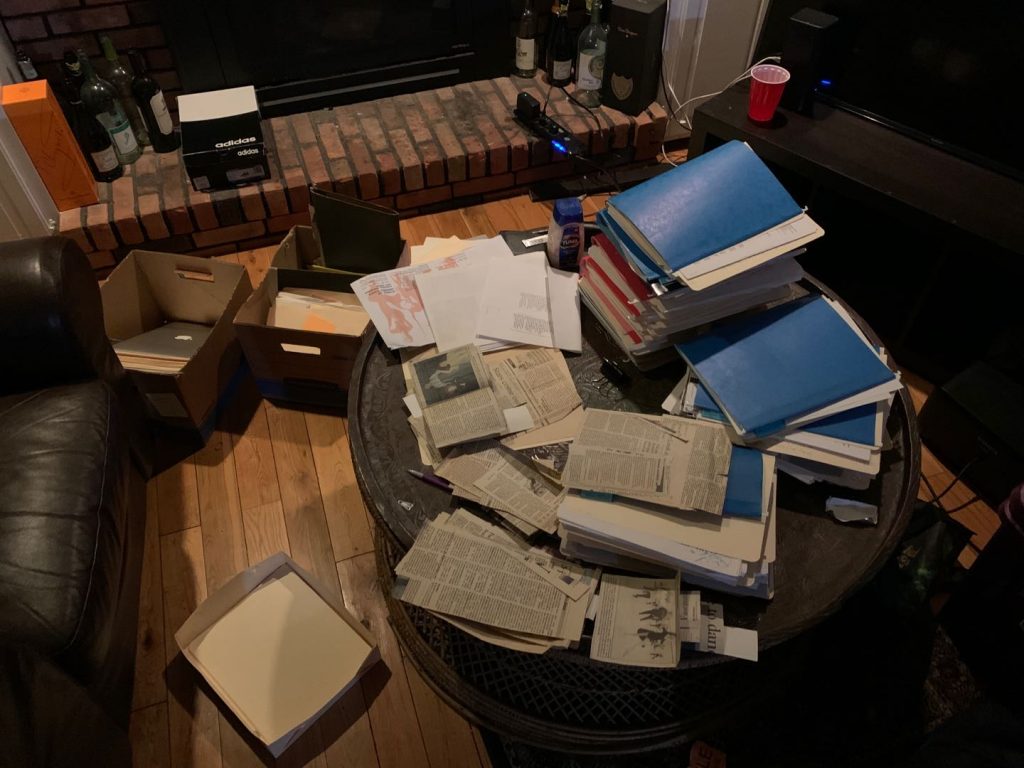
In March and April 2020 (despite the unwelcome addition of Covid 19 to the community), much of the work was complete. Some students took boxes home with them to finish the labeling and discovery, and an assistant, Amanda Peckler, joined the team to continue working with materials relocated into a History Department classroom and to pull documents for student projects. Then it was time to research and tell some of the stories to be found in the records, talking with members of SPAC and SKidmore social media teams as well as documentary filmmaker Nicole Van Slyke. These are the stories you see on this website.
Learn more about the archive by clicking here.
